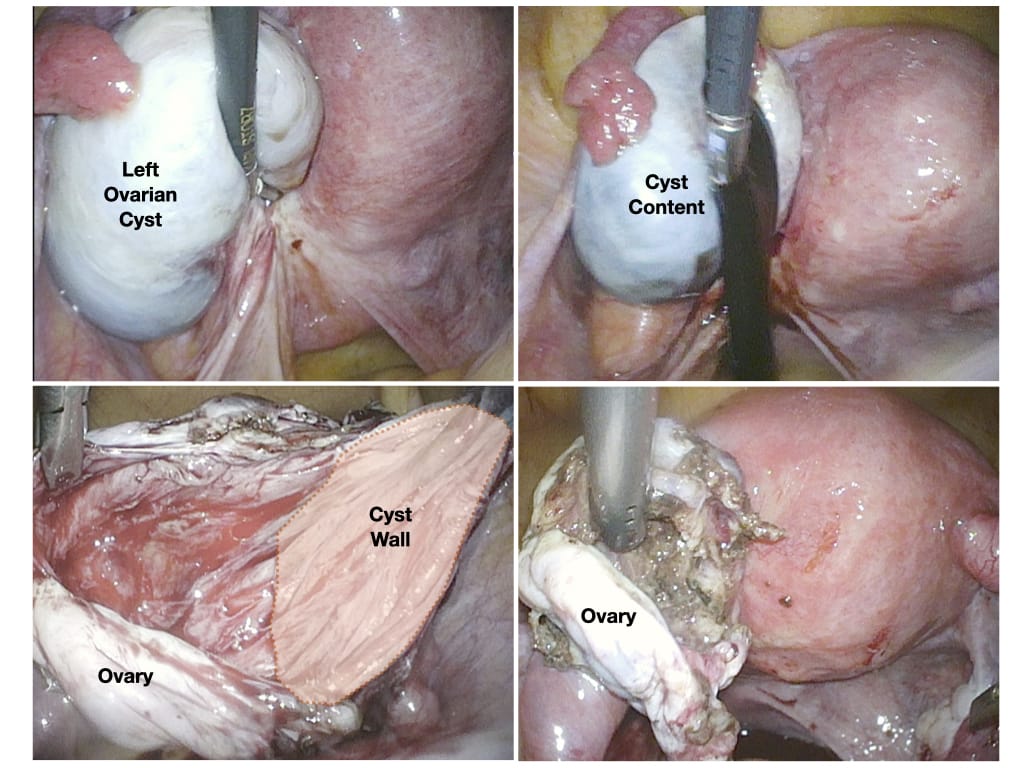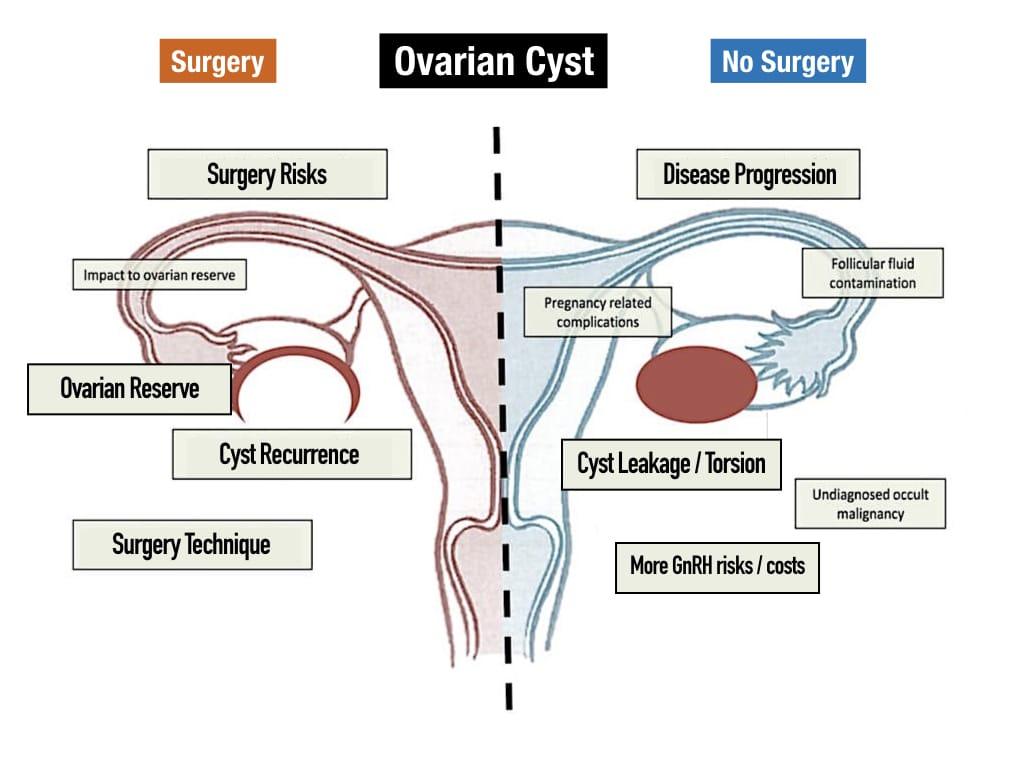Painful Periods – Endometriosis – Adenomyosis
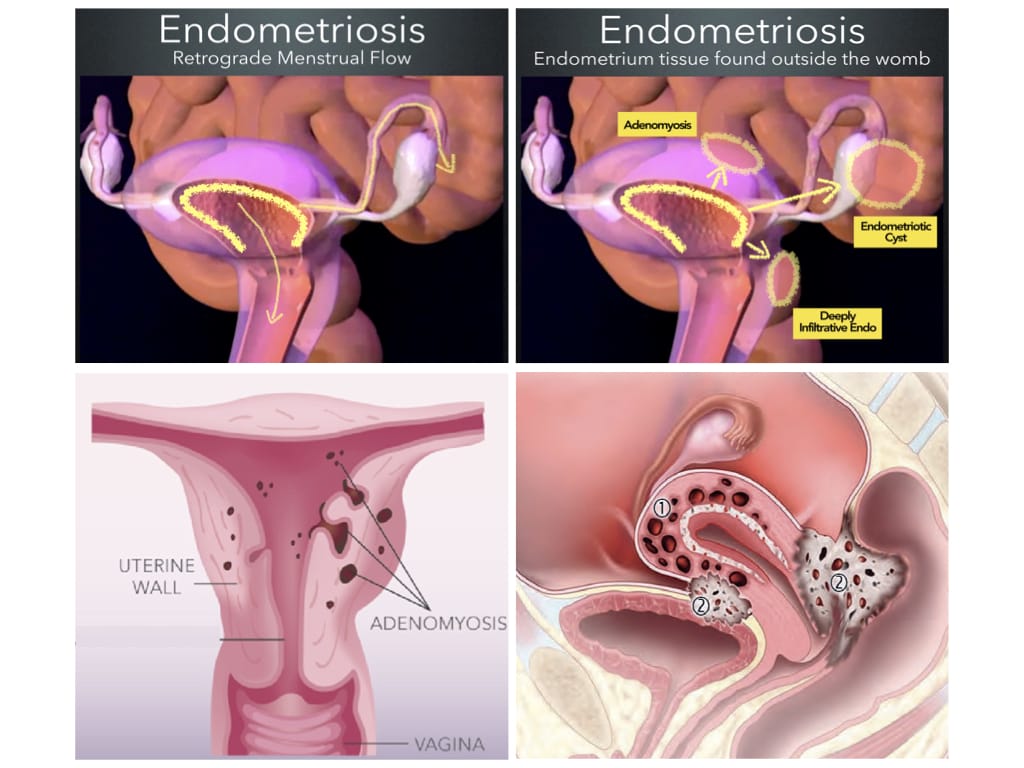
Endometriosis is the most common cause of painful periods.
It affects 10% of women worldwide.
Endometriosis is an inflammatory condition where menstruation is found outside the womb.
Endometriosis happens because menstruation tissue (called Endometrium) is found outside the womb. There are many theories explaining this and the Cell-Change Theory is one that best explains the cause of Endometriosis.
When endometriosis affects the ovary, it can form an ovarian blood cyst called Endometrioma.
When endometriosis affects the womb muscle, it can cause diffuse Adenomyosis where all the womb muscle is affected, or it can form an Adenomyoma, where a particular area of the womb muscle forms a fibroid-like lump.
Many women with Endometriosis have painful periods starting in their teens.
In 2022, Endometriosis in adolescent girls is highlighted, for the first time, in the Treatment Guidelines.
62% of teenagers with painful periods have endometriosis diagnosed by surgery in a review by Janssen (Human Repro Update 2018).
Endometriosis diagnosis can be delayed by up to 9 years because many people assume that painful periods in teenagers are normal.
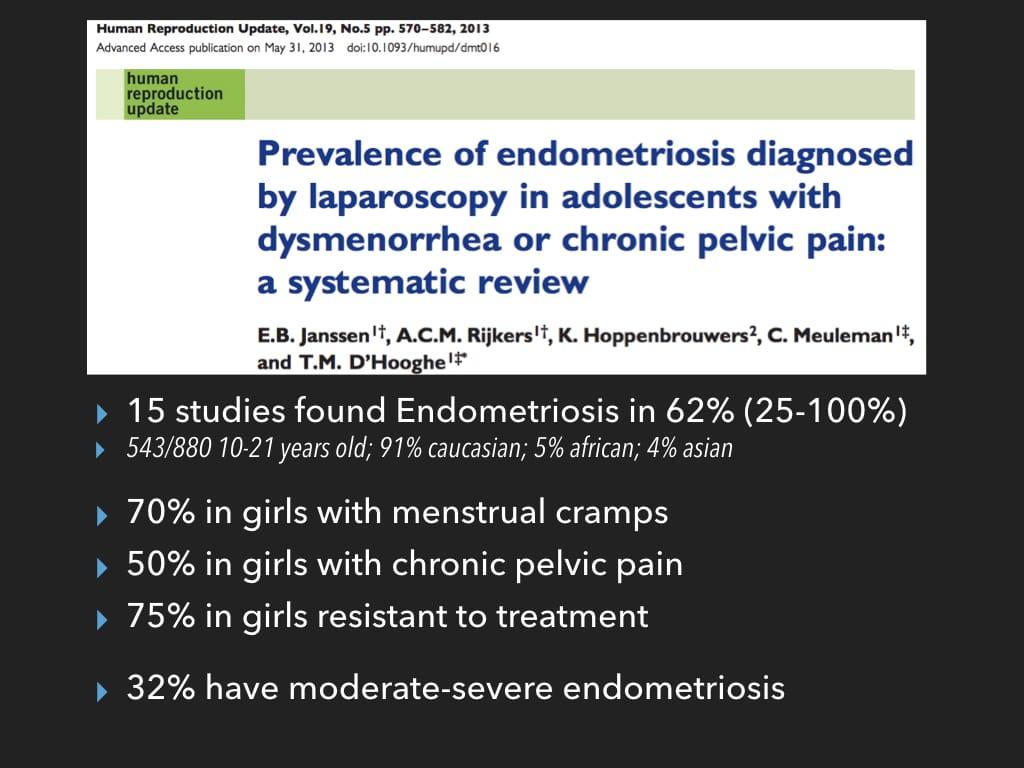
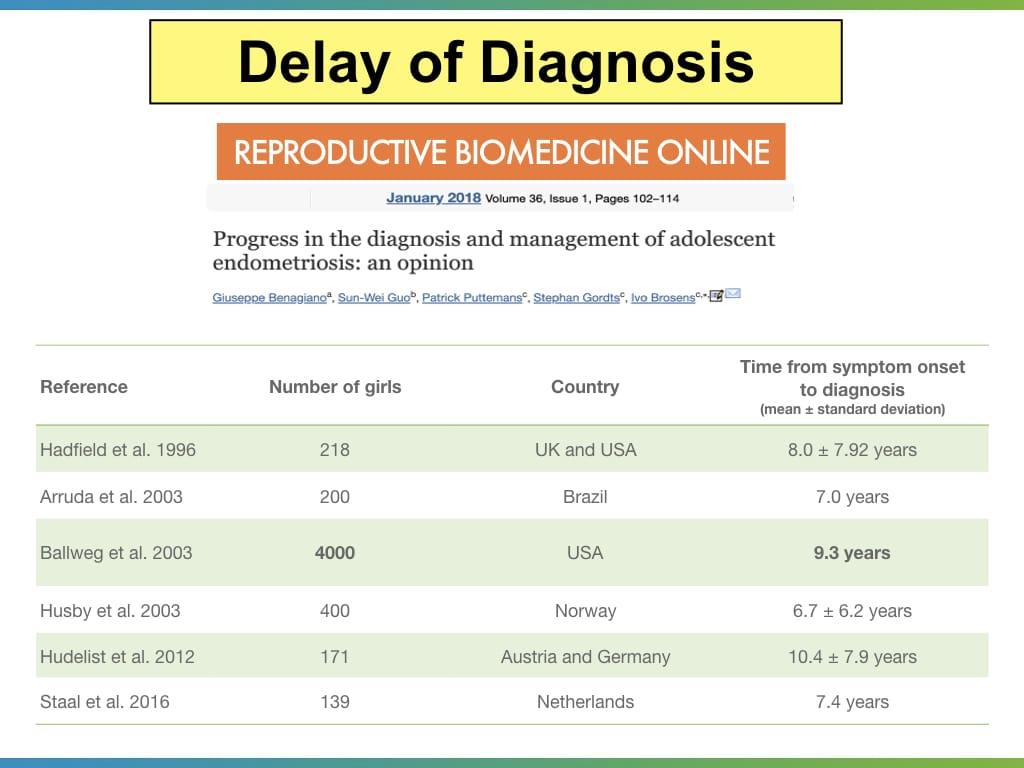
Endometriosis Symptoms
❖ Pain during menstruation often on the left side
❖ Pain at sexual activity
❖ Chronic pelvic pain
Other symptoms of endometriosis include:-
❖ Heavy and/or irregular menstruation
❖ Pre or post-menstruation spotting
❖ Difficulties getting pregnant
❖ Irritable bowel symptoms
❖ Fatigue, lethargy, low moods
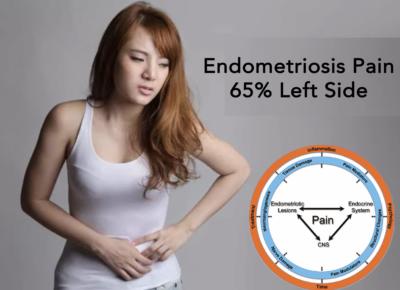
Endometriosis Diagnosis by Clinical Features 2022
Endometriosis can be suspected based on
❖ Symptoms
❖ Ultrasound or MRI findings suggestive of Endometriotic ovarian cysts / Adenomyosis of the uterus / Deep Pelvic Endometriosis
❖ Infertility with Raised CA125 levels.
Endometriosis Questionaire / Symptom Quiz & Clinical Scoring System are now used to pick out cases of Endometriosis in women with painful periods. The higher the score, the more likely your period pain is caused by Endometriosis.
Click HERE to start the Endometriosis Symptom Quiz.
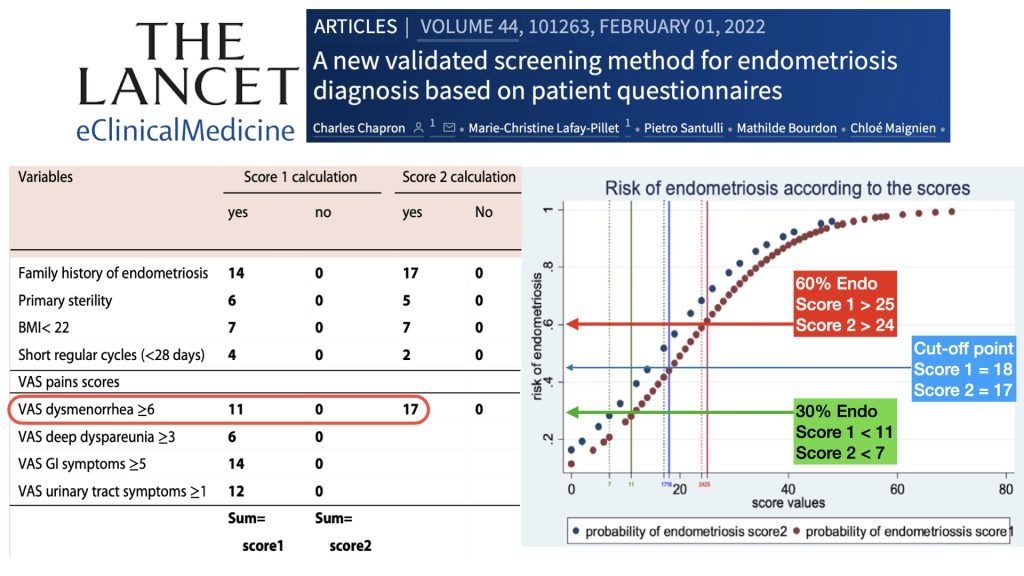
Surgical Diagnosis of Endometriosis Was the Gold Standard
In the latest Endometriosis Treatment Guideline in 2022, clinical examination and imaging (ultrasound or MRI) are recommended as the primary initial diagnostic work-up.
Surgical Diagnosis by Laparoscopy should be considered as the secondary step when women have negative imaging results or when empirical treatment is unsuccessful.
Endometriosis in the pelvis is seen as red, brown, and black spots in mild to moderate cases.
Endometriosis in the pelvis is seen as distorted anatomy, and swollen fallopian tubes with extensive adhesions in severe cases.
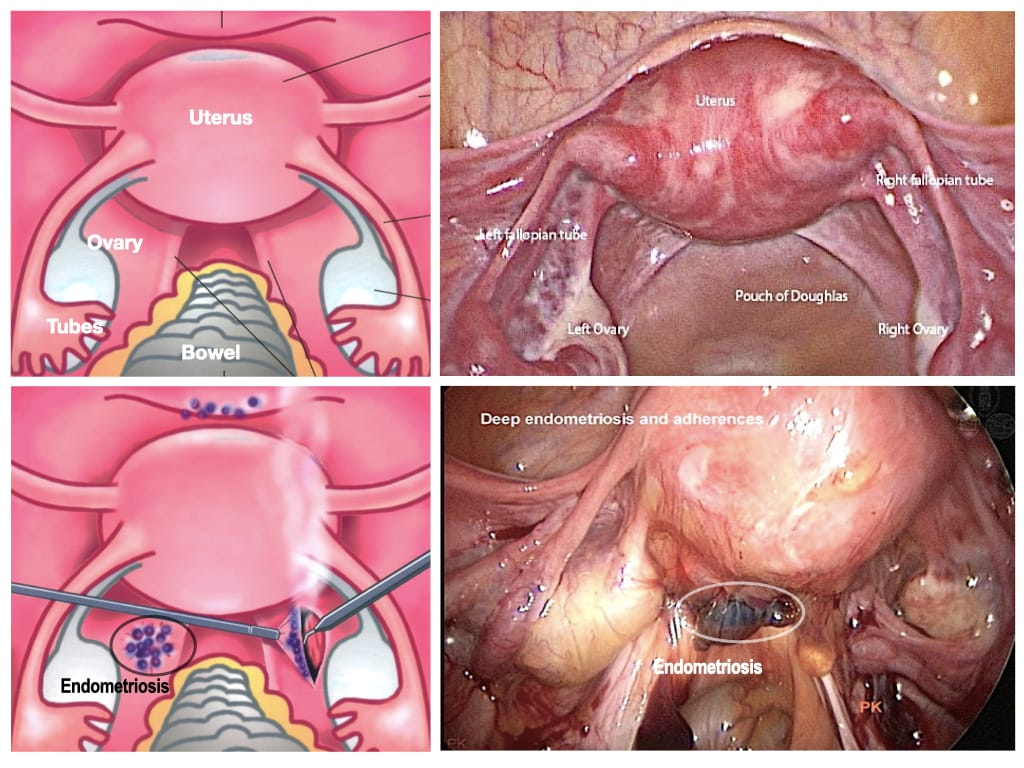
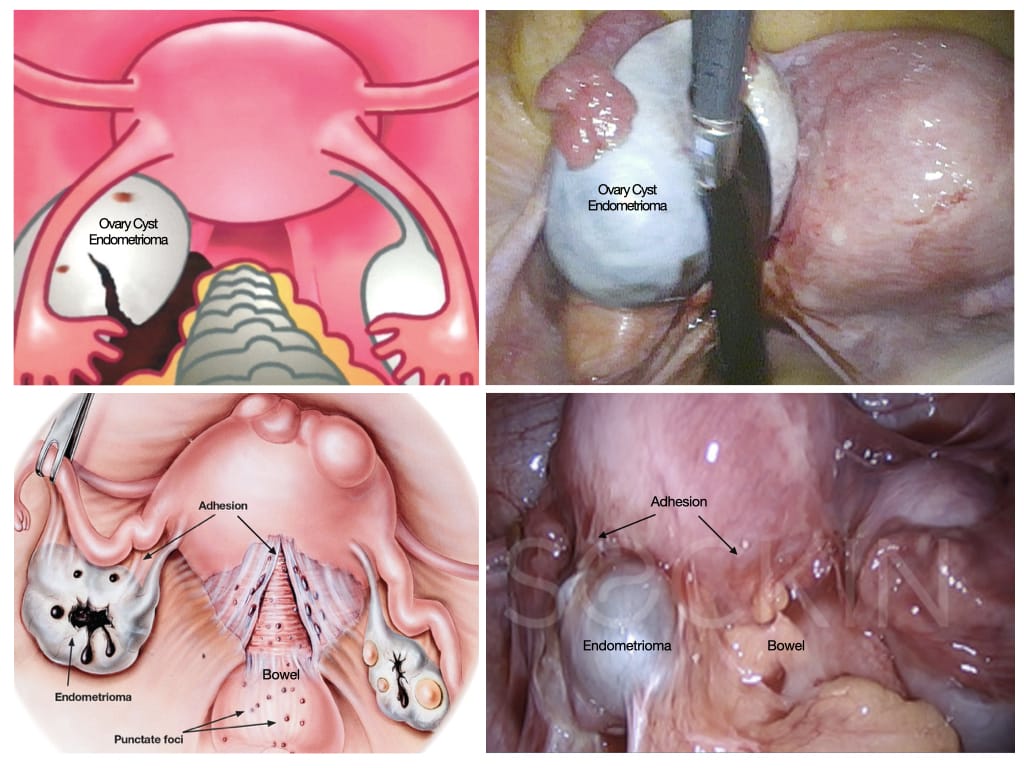
Medical Treatment for Endometriosis
Treatment is aimed at achieving a Good Quality of Life
Good Diet and Exercise have been shown to reduce Endometriosis Symptoms


Treating only the Symptoms
❖ Pain : Pain killers like Panadol, Nurofen, Ponstan, Arcoxia, Tramadol
❖ Bleeding : Tranexemic Acid to reduce heavy menstruation
❖ Other Symptoms : Medicines for bloating and irritable bowel symptoms
Treating Endometriosis to Stop the Symptoms
❖ Visanne (Dienogest), a hormone specially formulated for Endometriosis
❖ Mirena Intrauterine System
❖ Birth control pills
❖ Contraceptive injection (DepoProvera)
❖ Menopausal injection (Lurin, Diphereline, Decapeptyl)
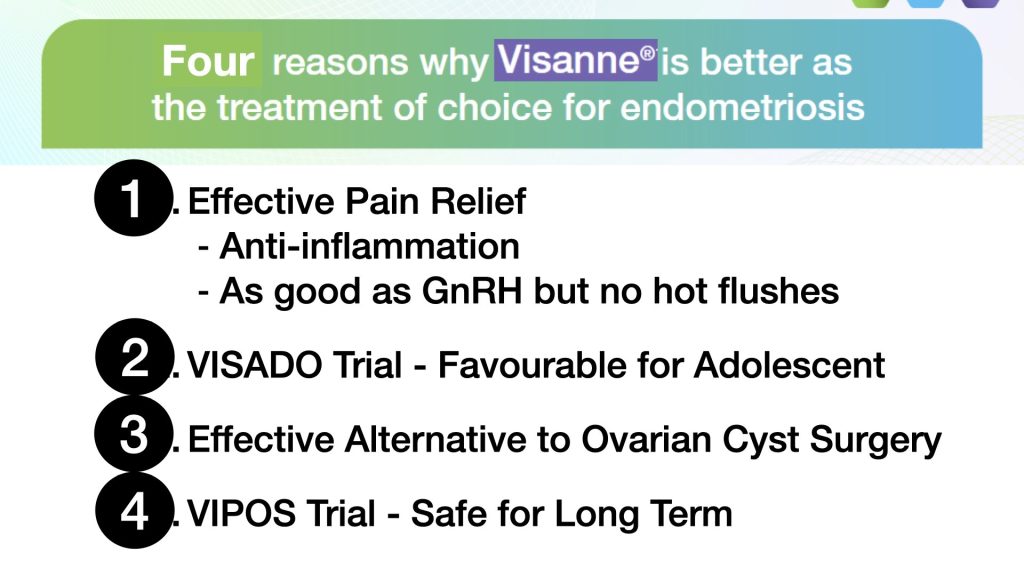
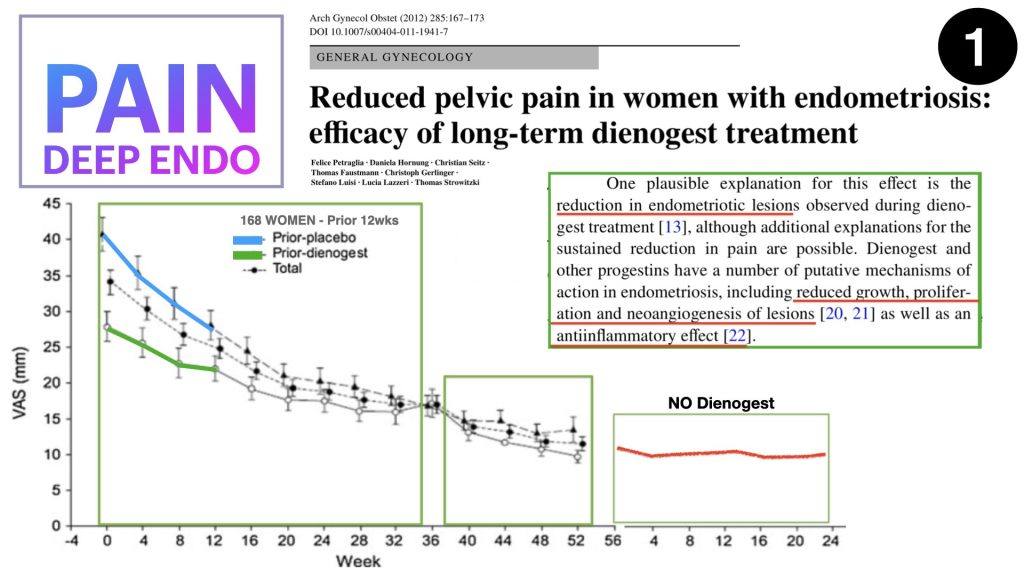
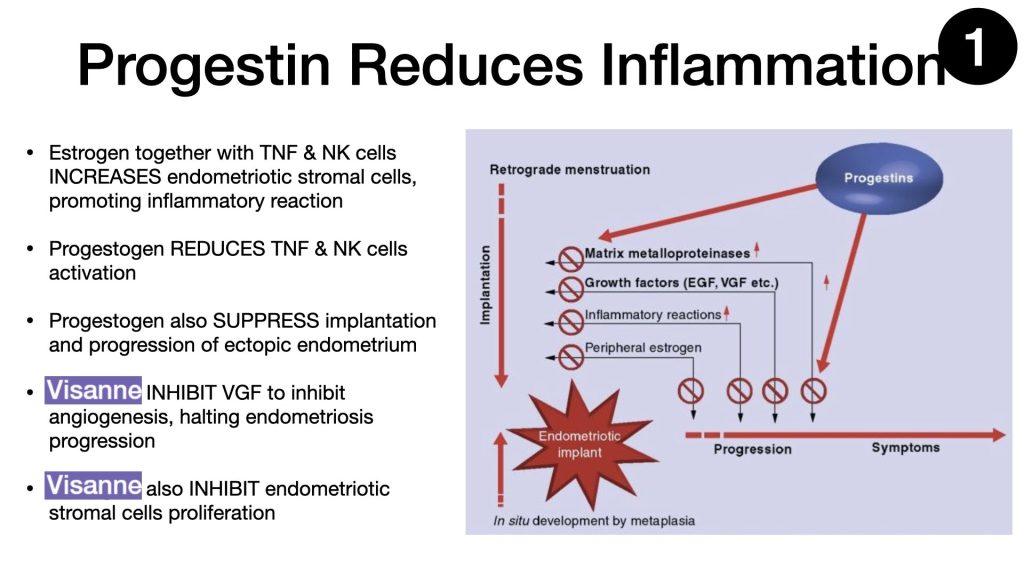
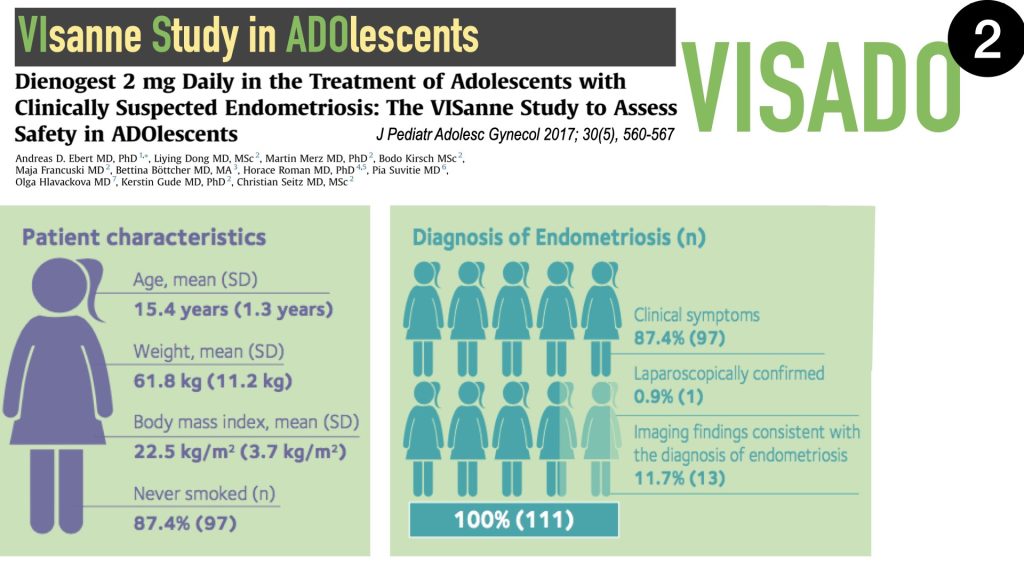
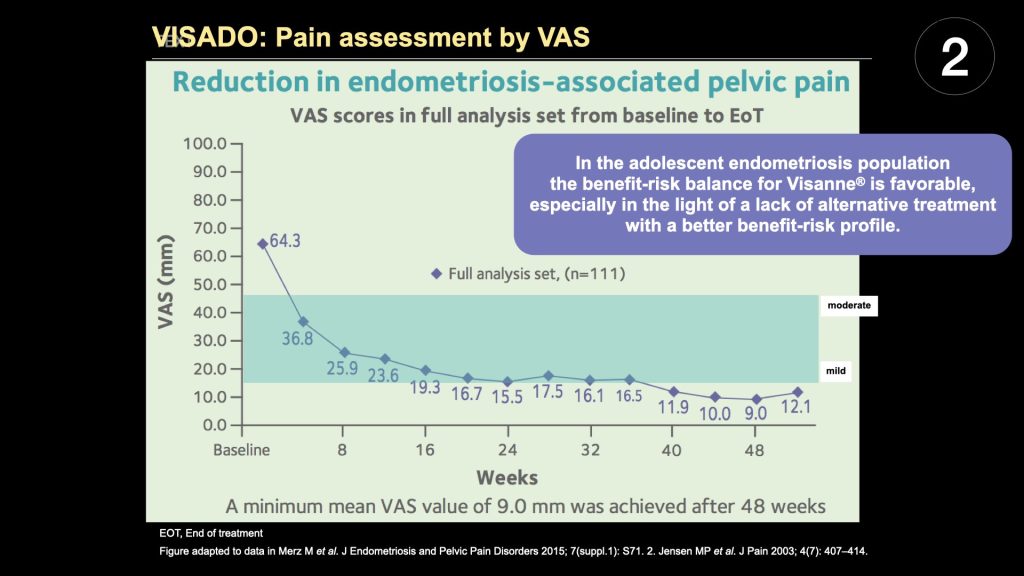
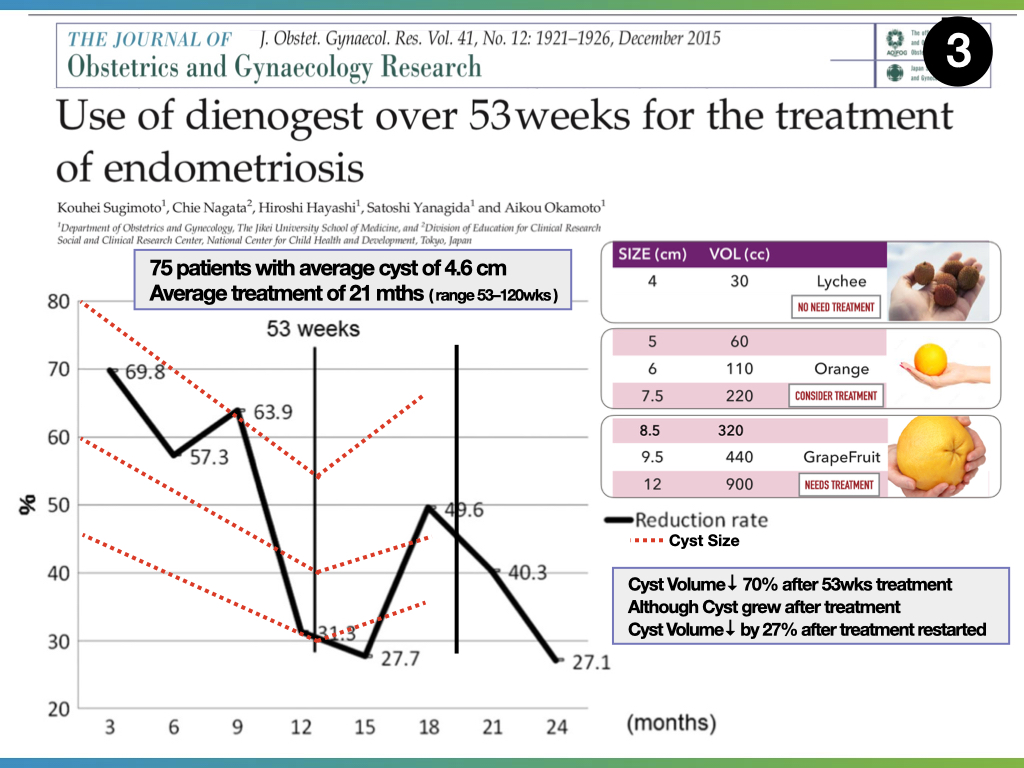
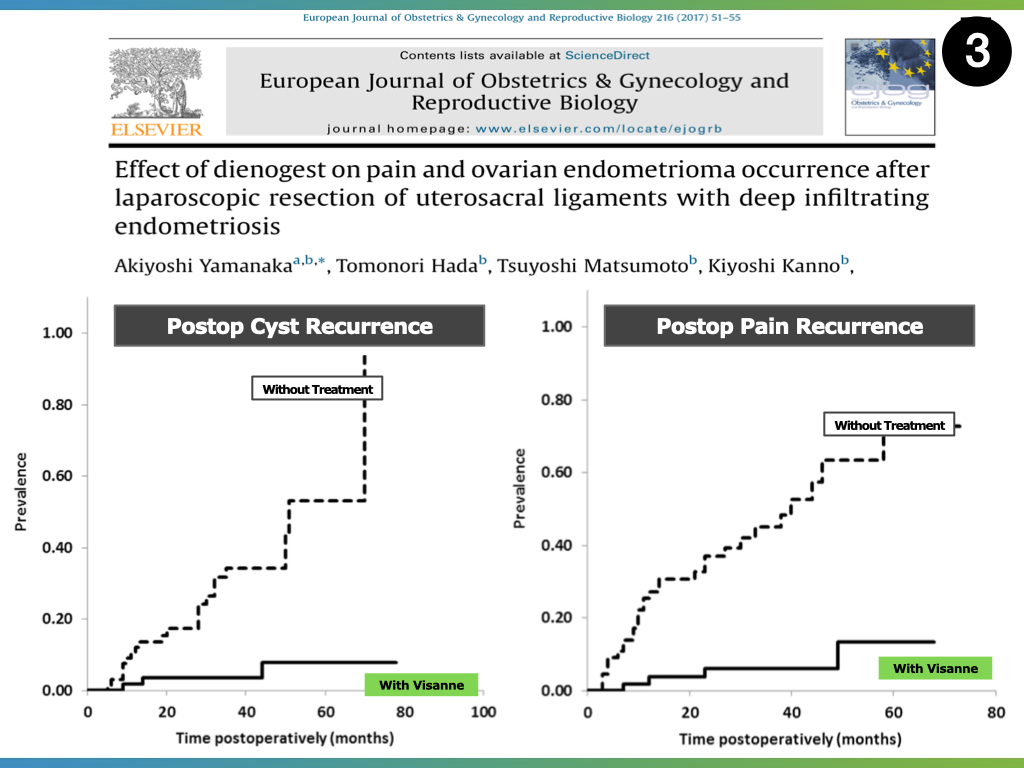
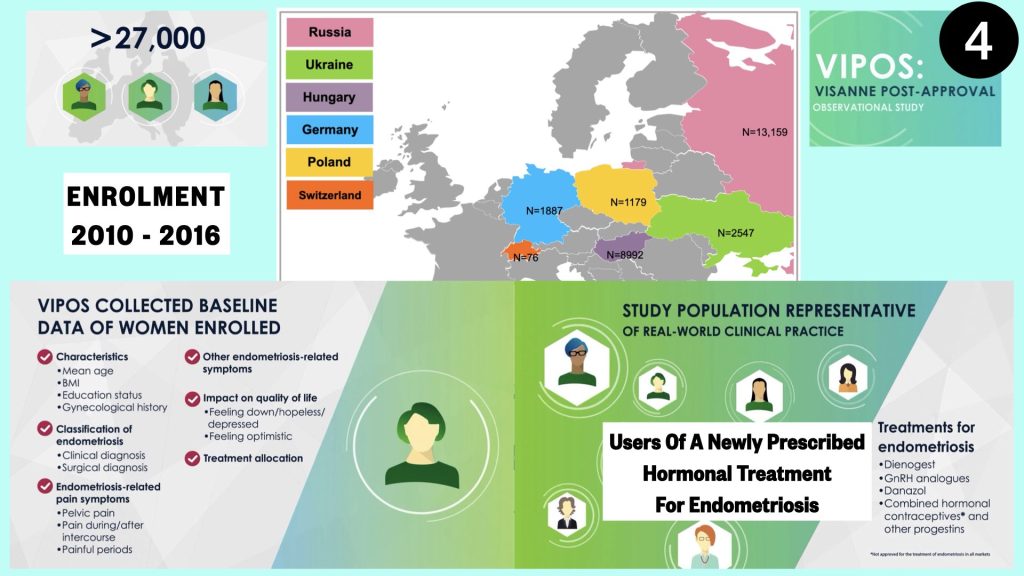
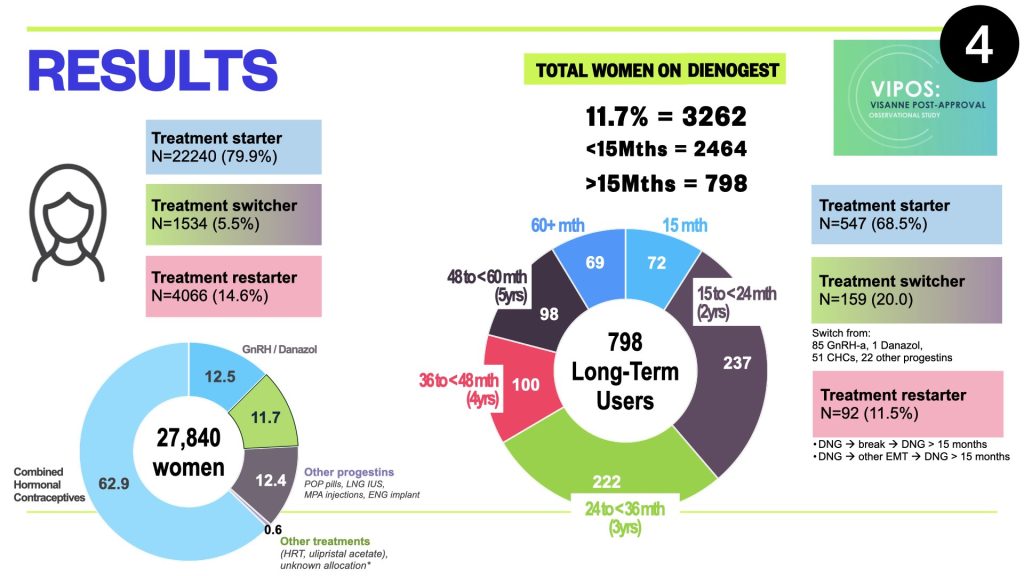

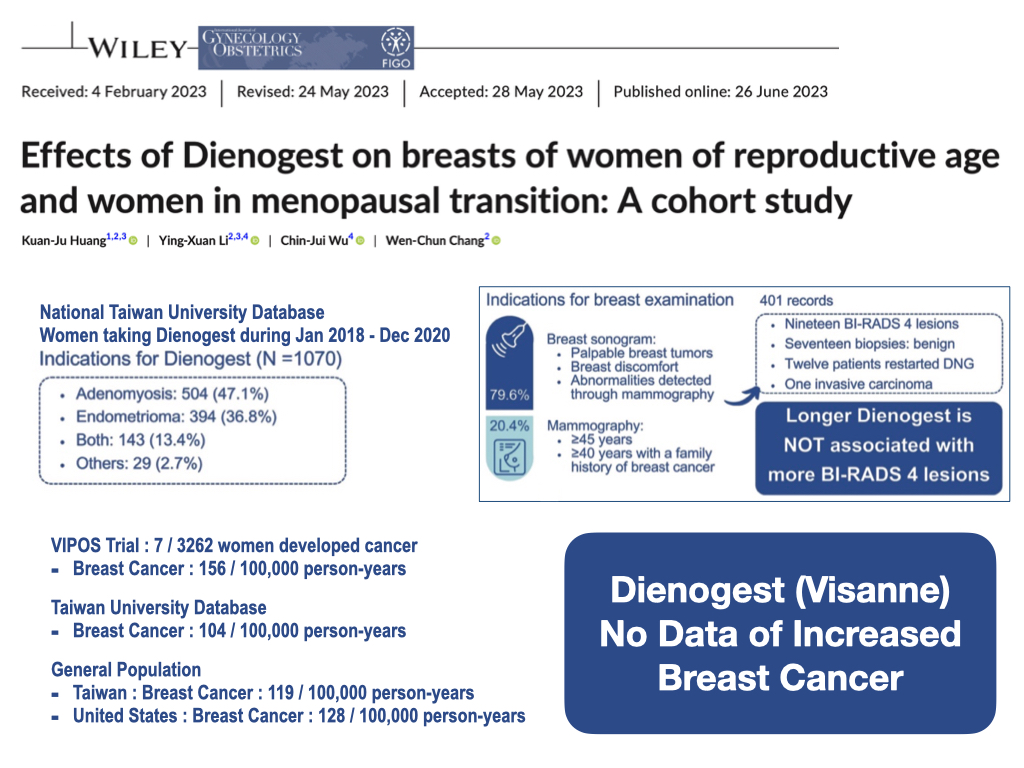
Surgical Treatment for Endometriosis
Surgery for endometriosis is needed when
❖ severe symptoms are not relieved with medical treatment
❖ large ovarian cyst of > 6cm are present
❖ there are problems trying to get pregnant
Surgery for Endometriosis is best done by Laparoscopy Key-hole Surgery.
This is because the areas behind the uterus and ovaries, as well as the deep pelvis, are best seen by the high-definition magnified view of the laparoscopic camera system.
Surgery that cuts away Endometriosis (Excisional Surgery) is better than surgery that burns away Endometriosis (Ablative Surgery).
